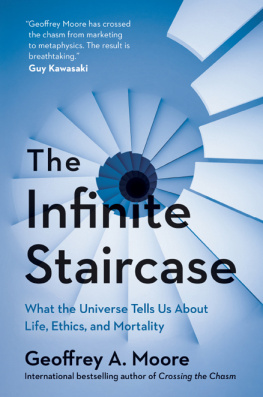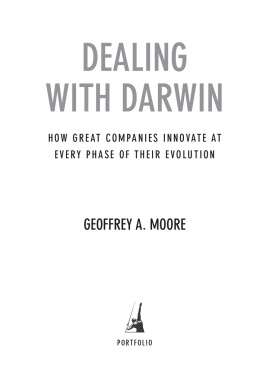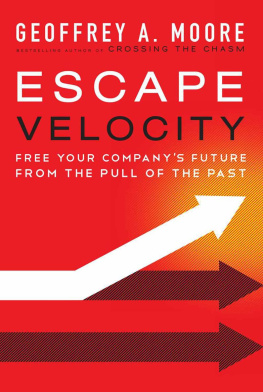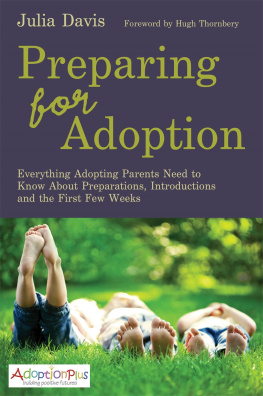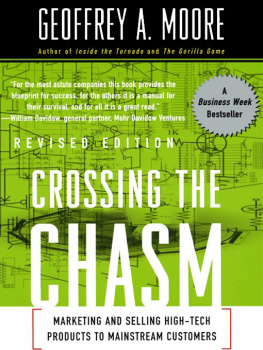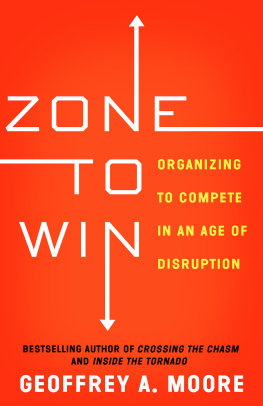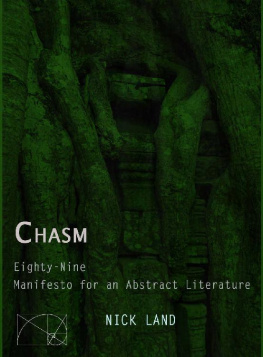
To Marie
Contents
When the proposal for Crossing the Chasm was under negotiation, both the publisher and the author agreed that if the book sold more than five thousand copies, it would be doing well. After all, it was a niche book from an unknown author addressed to the somewhat esoteric challenges of marketing high-tech products.
In fact, by the end of the decade, the book had sold more than three hundred thousand copies since its first publication in 1991. Of course, publisher and author were delighted. But the more interesting question might be, Why was the book so successful? The answer is a textbook example of the effectiveness of word-of-mouth marketing, the very practice that the book advocates in its niche approach to gaining mainstream adoption for disruptive innovations.
First of all, it turned out that the metaphor of the chasm and the recommendations for how to cross it struck a deep chord among experienced high-tech managers. Countless readers have told me that, although they valued the material in the book, it really didnt tell them anything they didnt know already. Rather it captured what had been for them scattered intuitions and rueful learnings and put them into a coherent set of frameworks that could be used for future decision making.
This, in turn, caused them to pass the book along to colleagues, as much to spread the vocabulary as anything else. Thus the book left the marketing department and began to find its way to the engineering section, where a whole lot of readers claimed it was the first marketing book they didnt throw away after reading the early chapters. Praise from engineers is praise indeed, and the author was deeply grateful for this response.
This unusual turn of events also caught the eye of the venture capital community, which became a channel for more book sales. Venture capitalists saw in the new vocabulary a means to begin a market development dialogue with their engineering-oriented entrepreneurs. Indeed for whole companies the book became required reading, just to get everyone on the same page.
Professors at business schools then picked it up for their courses in entrepreneurial marketing, which was becoming all the rage in the decade following the books first release. Students liked the book because it was both descriptive and prescriptive in clear terms, largely because it communicates the core of its arguments through metaphors, mixed though they often may be. If you bought into the analogies, you pretty much had the essence of the book, and reading it was just a confirmation of what you already knew.
And so things went swimmingly until around 1997 or so, when students began asking, Who is Ashton Tate or Cullinet? What is WordStar or Ingres? The examples, which are key to any argument by analogy, had grown long in the tooth. And so a revised edition was published, keeping the arguments largely intact but substituting 1990s companies for their 1980s predecessors, further affirming the authors belief that chasms are a perennial feature of the tech sectors landscape.
And that has been pretty much the status quo for the last decade. Sales have continued apace. Counting foreign language editions, at the time of this revision, they have surpassed six hundred thousand copies, with the frameworks in the book continuing to be invoked in the same contexts as before. But again, somewhere around 2007 students began asking, Who was ChannelPoint? Who is VerticalNet? Silicon Graphics? Savi? Arent there any case studies of companies we actually know ? And so, once again, it has become time to refresh the examples, a task that I embrace with enthusiasm, if perhaps a bit belatedly.
As before, my approach has been to preserve the fabric of the original book. To be sure, much water has passed under the bridge in the past decade, but once you start remodeling the bridge, you end up having to reconstruct it end to end. Instead, what I have allowed myself to do is add two appendices. The first is a short recap of the argument of the book which followed Crossing the Chasm , namely Inside the Tornado , the goal of which was to flesh out in full the Technology Adoption Life Cycle end to end from the early market, the chasm, and the bowling alley, on to the tornado, Main Street, and post-adoption category maturity. This should allow first-time readers to put crossing the chasm itself into its broader context.
The second appendix addresses arguably the most dramatic development in high tech of this century, the rise of consumer IT driven largely by increasingly innovative uses of mobile devices, cloud computing, and the World Wide Web. Prior to this era, IT categories almost always began life as business-to-business affairs with a subset eventually trickling down to business-to-consumer markets after the technology had been proven and cost reduced. But in this century, it has been the B2C businesses that have led the way, and it is just now that the B2B players are reaching out to bring these technologies into the enterprise.
It turns out that Crossing the Chasm is at heart a B2B market development model. It can be applied to B2C, at times quite effectively, but at the end of the day, it is not normally the best model to use. Instead, a model we have been calling the Four Gears has proved more useful for digital entrepreneurs building consumer businesses. So that is the topic addressed in the second appendix.
All in all, it has been quite a journey. Throughout, I have enjoyed the support of my family, especially my wife, Marie, as well as that of my many colleagues at the Chasm Group, Chasm Institute, TCG Advisors, and Mohr Davidow Ventures. Add to these my editors from HarperBusiness, my agent, Jim Levine, and my personal assistant and business manager, Pat Granger, and you can see it really does take a village. That said, perhaps most impactful of all have been the hundreds of clients who have brought to our consulting engagements the most interesting problems and the most engaging energy. They are the ones who inspire us all.
Geoffrey Moore
June 2013
There is a line from a song in the musical A Chorus Line : If Troy Donahue can be a movie star, then I can be a movie star. Every year one imagines hearing a version of this line reprised in high-tech start-ups across the country: If Mark Zuckerberg can be a billionaire... For indeed, the great thing about high tech is that, despite numerous disappointments, it still holds out the siren lure of a legitimate get-rich-quick opportunity.
This is the great attraction. And yet, as the Bible warns, while many are called, few are chosen. Every year millions of dollarsnot to mention countless work hours of our nations best technical talentare lost in failed attempts to join this kingdom of the elect. And oh what wailing then, what gnashing of teeth!
Why me? cries out the unsuccessful entrepreneur. Or rather, Why not me? Why not us? chorus his equally unsuccessful investors. Look at our product. Is it not as goodnay, betterthan the product that beat us out? How can you say that Salesforce is better than RightNow, LinkedIn is better than Plaxo, Akamais content delivery network is better than Internaps, or that Rackspaces cloud is better than Terremarks? How, indeed? For in fact, feature for feature, the less successful product is often arguably superior.
Not content to slink off the stage without some revenge, this sullen and resentful crew casts about among themselves to find a scapegoat, and whom do they light upon? With unfailing consistency and unerring accuracy, all fingers point to the vice president of marketing. It is marketings fault! Salesforce outmarketed RightNow, LinkedIn outmarketed Plaxo, Akamai outmarketed Internap, Rackspace outmarketed Terremark. Now we too have been outmarketed. Firing is too good for this monster. Hang him!
Next page

